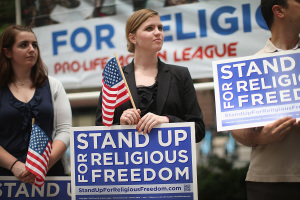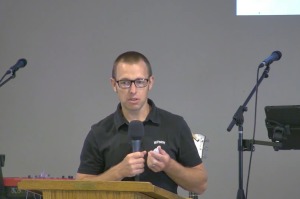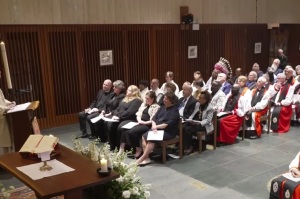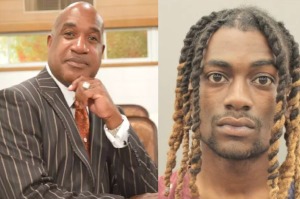Leaving Christianity: What are the statistical trends?
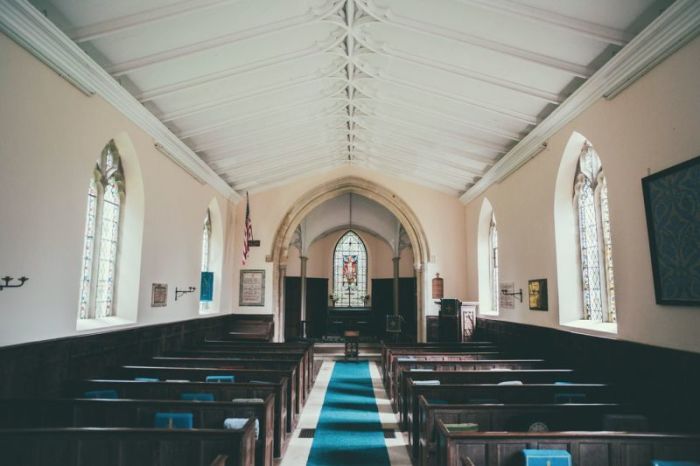
The Christian Post’s series “Leaving Christianity” explores the reasons why many Americans are rejecting the faith they grew up with. In this eight-part series, we feature testimonies and look at trends, church failures and how Christians can respond to those who are questioning their beliefs. This is part 3. Read parts 1, 2, 4, 5, 6, 7a, 7b, and 8.
Earlier this year Joshua Harris, pastor and author of the controversial book I Kissed Dating Goodbye, announced that he no longer considered himself a Christian.
“By all the measurements that I have for defining a Christian, I am not a Christian. Many people tell me that there is a different way to practice faith and I want to remain open to this, but I’m not there now,” he stated in an Instagram post.
Soon after, Hillsong music writer Marty Sampson took to social media to explain that he was seriously questioning his Christian beliefs.
“I’m genuinely losing my faith, and it doesn’t bother me. Like, what bothers me now is nothing. I am so happy now, so at peace with the world. It’s crazy,” Sampson wrote in a now-deleted Instagram post.
Even before notable Christian figures like Harris and Sampson made headlines, it had been well-documented that Christianity in America has been declining while those who identify as “religiously unaffiliated” or “nones,” have been on the rise.
In 2012, the Pew Research Center garnered many headlines and fostered much discussion when they reported a rise in the population of Americans who were religiously unaffiliated.
"In the last five years alone," explained Pew in an October 2012 piece, "the unaffiliated have increased from just over 15 percent to just under 20 percent of all U.S. adults."
"Their ranks now include more than 13 million self-described atheists and agnostics (nearly 6 percent of the U.S. public), as well as nearly 33 million people who say they have no particular religious affiliation (14 percent)."
Earlier this month, Pew released a new report which found that the decline was continuing at what it called a "rapid pace."
In surveys conducted in 2018 and 2019, Pew found that 65 percent of Americans described themselves as Christian, a 12 percent decline over the past decade.
By contrast, during the same time period, the religiously unaffiliated category went from 17 percent in 2009 to 26 percent a decade later.
"Religious ‘nones’ are growing faster among Democrats than Republicans, though their ranks are swelling in both partisan coalitions,” explained Pew.
“And although the religiously unaffiliated are on the rise among younger people and most groups of older adults, their growth is most pronounced among young adults.”
According to the Public Religious Research Institute’s annual American Values Atlas, which features over 60,000 interviews a year, the number of Americans who have identified as white and Christian has declined from 54 percent in 2008 to 41 percent in 2018.
PRRI also found that the number of Americans who identify as religiously unaffiliated went from single digits in the 1990s to 25 percent of the population in the present day.
A recent report from Pinetops Foundation estimated, based upon data from Pew, Gallup, PRRI and Baylor, that between 26-42 million people raised in Christian homes will disaffiliate from Christianity by 2050.
The Christian Post interviewed multiple experts on Americans leaving Christianity and looked at some of the most recent research to see what major trends have emerged.
A varied impact on American churches

The rise of the religiously unaffiliated has hit different parts of the church in different ways, according to recent research.
Robert P. Jones, founder and CEO of the Public Religious Research Institute and the author of The End of White Christian America, noted that declines in American Christianity can vary considerably between race and denomination.
“Before the last decade, most of those leaving Christianity were white mainline Protestants or white Catholics, but over the last 10 years, we have seen a new second wave of white Christian decline: white evangelical Protestants have dropped from 21 percent to 15 percent of the population,” explained Jones to The Christian Post.
“Overall, we see this pattern in the religious landscape: white Christian decline, African American Christian stability, and growth among Latinx Protestants, Asian American and Pacific Islander Christians. Those declines among white Christians are feeding the growth of the religiously unaffiliated.”
Eastern Illinois University Professor Ryan Burge, who has done extensive research on religious trends in the United States, explained to CP the different trends of decline between evangelicals and mainline Protestants.
Evangelicals were about 22 percent to 23 percent of the U.S. population during the mid-1970s, according to Burge, and grew to peak at nearly a third of the population in 1993.
“Since then they have seen a measured decline,” said Burge. “That decline stopped around 2000, when the number of evangelicals stuck around that same 22 to 23 percent benchmark and has stayed there ever since.”
By contrast, mainline Protestants are what Burge calls “a story of precipitous decline,” going from about 30 percent of the U.S. population in 1975 to about 10 percent of the population in the present day.
“Nones have seen the opposite of mainline Protestants,” he explained. “They were consistently between 6 to 8 percent of the population from 1972 to 1992. Since then it's been a constant trend upwards. They were 9 percent in 1993, 14 percent in 1998, 17.4 percent in 2006, and are now 23.1 percent in 2018.”
In 2017, Burge published a report for the website Religion in Public which found that “the number of Americans who believe that the Bible is literally true has stayed remarkably steady since the mid-1990s.”
Burge also found in 2017 that biblical literalism among evangelicals was high in the 1980s, dropped in the 1990s, yet rebounded so that by 2016 the level was about as high as the 1980s, or about 60 percent.
“We know that the share of devoutly religious people in America has not changed. The intensely religious are a strong and cohesive bunch,” said Burge to CP in his interview in late August. “They are not dissuaded by the rise in secularism — in fact, they are emboldened by it.”
“While the nones have gone from 5 percent to 23 percent, the share of Americans who attend church at least once a week has only dropped from 30 percent to 24 percent.”
















